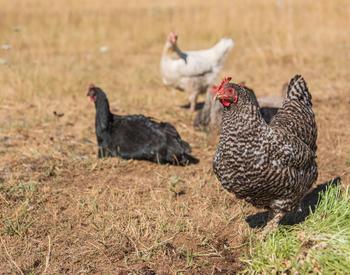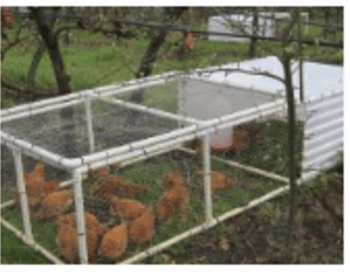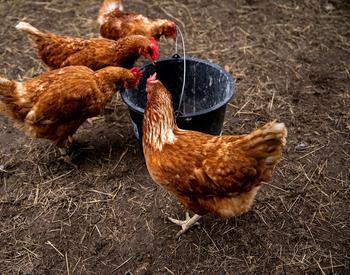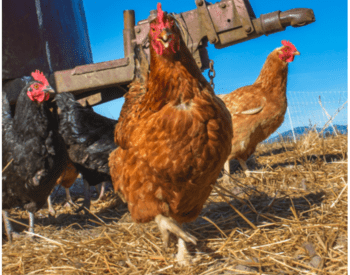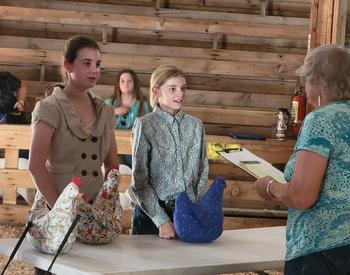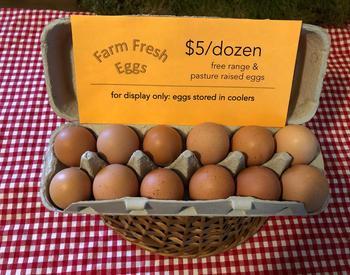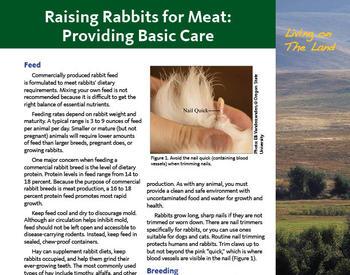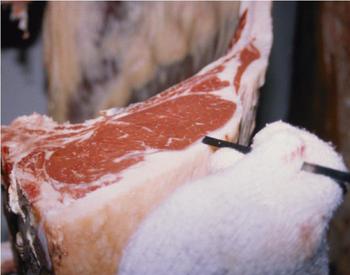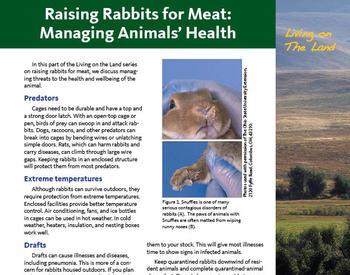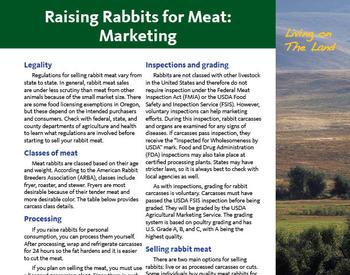NOTE: This resource is part two of an informational series. View all resources in the series.
What determines a rabbit's coloring?
Genetics! Coat color is based on several different genes that control color base, color density, pattern, extension of dark pigment, spotting and silvering. There is still much unknown about the rabbit genome and there may be genes that have not been identified yet. Let's discuss specific aspects of the rabbit genome and how they interact to form what we see visually (also known as the phenotype).
The known genes that control coat color and pattern are A, B, C, D, E, spotting and silvering. Read on to learn more about each gene and how genotypes influence phenotype (what the rabbit looks like).
NOTE: To see larger versions of the diagrams on this page — If you are on a desktop computer, right-click on the image and select 'open in new tab'. All images are also available full size in the project's image gallery.
- The B gene, scientifically known as TYRP1 (tyrosinase related protein 1) gene, controls the coat color base. The B gene has two known alleles: B and b. This gene demonstrates complete dominance, with the B allele being dominant to the recessive b allele. The B allele produces a black color base, and a homozygous bb genotype produces a chocolate (brown) color base. The B allele is considered the wild-type gene.
- The D gene, scientifically known as MLPH (melanophilin) gene, controls the density of the coat color. The D gene has two known alleles: D and d. This gene demonstrates complete dominance with the D allele being dominant to the recessive d allele. The D allele contributes a dense coat color, meaning the base coat color will appear according to the B gene genotype. The d allele represents a dilute coat color, meaning this will affect the coat based on the B gene. When a rabbit has a dilute genotype (dd), a black base will appear as blue and a chocolate base will appear as lilac. The D allele is considered the wild-type gene.
- The A gene, scientifically known as the ASIP (agouti signaling protein) gene, controls the color pattern of the coat. The A gene demonstrates complete dominance with the A allele being the most dominant and the a allele being the most recessive. The A gene has three known alleles: the A allele causes the agouti pattern, the at allele causes the tan pattern, and the a allele causes the self-pattern. The agouti pattern is considered the wild-type allele, which appears as a multicolored, dark and light speckled coat, which comes from each individual hair having bands of color: dark alternating with light. The belly of an agouti rabbit is light, often a cream color. The tan pattern appears as a dark coat with a lighter (red or yellow) belly and nose, where each hair is a solid color with no banding. The self-pattern appears as the phenotype based on the other coat color genes; each hair is a solid color with no banding.
- The C gene, scientifically known as the TYR (tyrosinase) gene, controls the coloring of the coat. In order of descending dominance, the C gene has 5 alleles: C, cchd, cchl, ch, and c. The C allele stands for full color and the color phenotype is based on the D, B, and A genotypes. The cchd allele stands for chinchilla dark and causes the replacement of what would be yellow/red pigments with white/cream. For example, in an A_ cchd_ rabbit, the yellow band on the individual hairs from agouti is replaced by white, giving a chinchilla coat. The cchl allele stands for chinchilla light, also called sable, and seems to lighten pigments overall but keep the ears, nose, feet, and tail darker than the body. The existence of the cchl allele and its relationship with the sable phenotype has been speculated, but not confirmed with DNA evidence. The ch allele stands for Himalayan and appears as a white coat with dark ears, nose, feet, and tail. The c allele stands for albino and appears as a completely white coat. The cc genotype is epistatic to all other genotypes, so if a rabbit is cc it will be albino regardless of the rest of the genotypes. The C allele is considered the wild-type allele.
- The E gene, scientifically known as the MC1R (melanocortin 1 receptor) gene, controls the extension of dark pigment. In part 1 we discussed the E gene a bit and only mentioned two alleles, however the E gene is actually a little more complicated. In order of descending dominance, the E gene has 5 known alleles: Ed, Es, E, ej, and e. The Ed allele stands for full extension and the color will be determined by the B and D genotypes, no matter what the A and C genotypes are (except cc). (The Ed allele is uncommon.) The Es allele stands for partial extension and appears as steel, where individual hairs are dark with either silver or gold tips. For the steel phenotype to appear, the rabbit must also have an A_ genotype. The E allele stands for normal extension and appears as the phenotype that is based on the B, D, A, and C genotypes. The E allele is considered the wild-type allele. The ej allele stands for different extension by hair shaft. Originally known as Japanese brindling, an ej_ rabbit will be harlequin or tricolored. The e allele stands for no extension, and the ee rabbit appears as fawn/orange/red. The E genotype determines if how much red or yellow pigment will be in the coat.
- The spotting gene, scientifically known as the KIT (KIT proto-oncogene, receptor tyrosine kinase) gene, controls white spotting on the coat. What we think of as typical spotting, or a broken coat, occurs with a heterozygous genotype of Enen. The genotype EnEn appears almost all white; this phenotype is sometimes termed a “Charlie”. The genotype enen appears as no white spotting. The en allele is considered the wild-type allele.
- The silvering gene controls the silvering of the coat, where white hairs are interspersed in a darker coat over the whole body. The gene that controls silvering has not been identified yet. Sometimes, silvering is observed in heterozygotes (Sisi) and sometimes not. Only a handful of breeds have the si allele (Silver, Silver Fox, Champagne d’Argent, and Crème d’Argent), with varying degrees of silvering.The Si allele is considered the wild-type allele.
A wild type coat refers to the “original” rabbit coloring, meaning prior to domestication. The wild-type genotype is AABBCCDDEEenenSiSi. With this combination of alleles, the rabbit would have a chestnut color. Each hair over the top of the rabbit will be banded with black and dark yellow, while the belly will be white.

